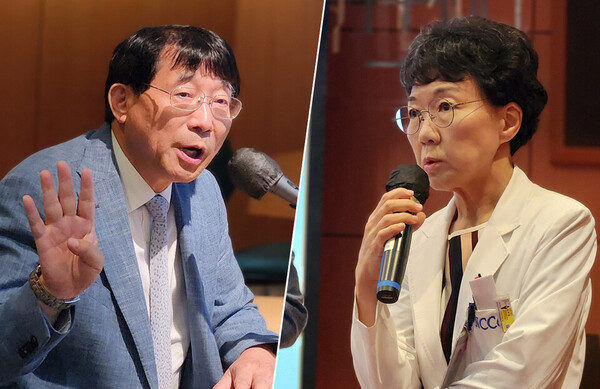The National Cancer Center has set up a “shelter” for childhood cancer patients traveling from provinces to receive proton therapy. Young cancer patients can stay there free of charge with their guardians during the six-week treatment period.
When the NCC completes the “4P House” (Place for Pediatric cancer Patients who need Proton therapy) in September, sick children and their caregivers will not have to move from one stopgap residence to another.
Only the National Cancer Center and Samsung Medical Center have proton therapy machines, so provincial cancer patients must travel to Seoul for proton therapy. Pediatric cancer patients have to undergo treatment for five minutes every day for six weeks. Each time, they must accompany guardians and find accommodation during treatments. It's not cheap, either.
Over the past decade, 55 percent of the patients who received proton therapy at the National Cancer Center were provincial residents.
In response, the NCC decided to build the 4P House and purchased a two-story building nearby. The building has a total gross floor area of 209.98 square meters and is within walking distance of the NCC. It cost about 800 million won ($5,797) to purchase and remodel the building. All costs came from the National Cancer Center Development Fund without government support. After completion, about 50 million won a year is needed for maintenance, but NCC cannot charge patients. The NCC plans to collaborate with Childhood Cancer Korea to provide free access to the 4P House for childhood cancer patients who travel from rural areas to receive proton therapy.

“It is difficult indeed to treat children. It requires a lot of workforce. Doctors are one part of that workforce,” said Professor Kim Joo-young of the Department of Radiation Oncology, director of the Proton Center at the National Cancer Center, during a news conference on Tuesday.” Proton therapy is covered by health insurance, so the burden of medical expenses is low, but other resources and environments are not considered.”
In August 2022, Professor Kim requested the National Cancer Center Development Fund to raise funds for the shelter, and a campaign was launched to support the project.
“In foreign countries, if a patient comes from far away to receive radiation treatment, it is important to see if there are accommodations nearby for the patient's safety,” Professor Kim said. “It should be approached not as a social consideration, but as an important factor for patient safety. There should also be a system that considers the psychological and emotional stability of pediatric cancer patients.”
NCC President Seo Hong-gwan lamented that as a public medical institution, NCC should do such works but they are not prioritized in the government’s budget.
“The National Cancer Center is a government-affiliated institution. Unlike private hospitals, it can allocate many beds for hospice and palliative care. Private hospitals cannot allocate beds because they are bound to lose money,” Seo said. “Even if we take measures to act as a public healthcare organization, we are responsible for any deficit. The government will not compensate.”
“The Ministry of Economy and Finance prioritizes economic efficiency in budgeting,” Seo said. “As a result, our budget requests are often not reflected. However, it is also our role to inform the budgeters of the need for shelters for pediatric cancer patients.”

